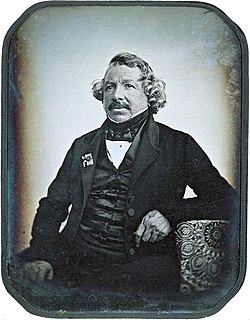
Daguerreobase is a public platform of archives, libraries, museums and private contributors from across Europe. Daguerreobase assembles and preserves information on daguerreotypes. It aims to bring together digital images and descriptions of more than 25,000 European historical daguerreotypes, daguerreotype equipment, and related literature. [1]
Contents
Daguerreobase is primarily a database hosting images of daguerreotypes for curators, photographic historians, collectors, photographers, and the general public.
The content is also available through Europeana, the portal and digital library for European Cultural Heritage of the European Union.
In 2014, Daguerreobase and Europeana celebrated the 175th birthday of photography with a virtual exhibition of European daguerreotypes on their website.
Currently 17 partners from 13 different European countries are working together, including institutions, private collectors and photograph conservators.
The project is partially funded under the Information and communications technology Policy Support Programme (ICT PSP) as part of the Competitiveness and Innovation Framework Programme by the European Community.